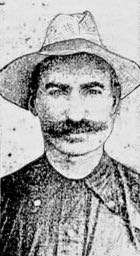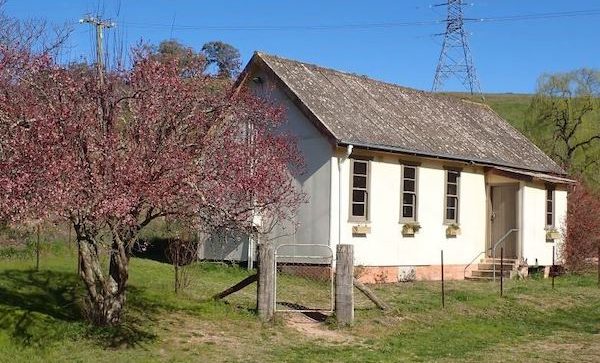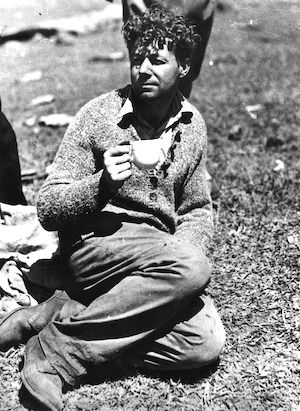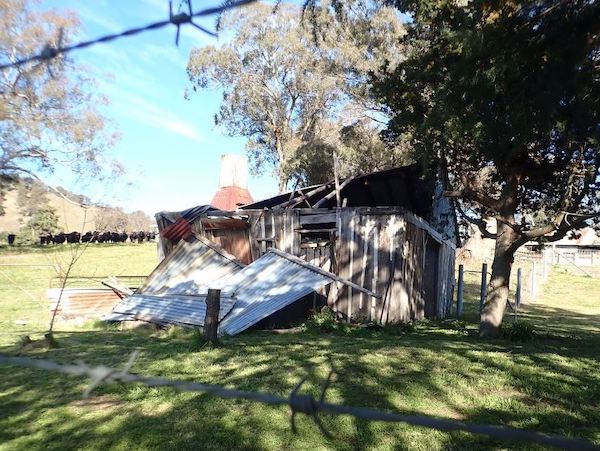The Days of Martini’s Buckjumping Show
© Chris Woodland
Martini’s Buckjumping Show.
Leaving Skurthorpe’s show in October 1901, the little group started their new enterprise in December, starting out from Bankstown, Sydney, with one small performing tent and a small wagon or wagonette.
Though Martini was no roughrider, he was an extremely talented performer on the triple bars. (( The term barrist was sometimes used to describe such an athlete. )) His years on the road with other shows had taught him much, but there would be much more for him to learn. Experience on the road would teach them many things: that their performing animals must always have sufficient, water, food and ample rest. To maintain their performing abilities donkeys, mules, jennets, ponies and horses, both circus performers and buckjumpers needed to maintain their strength and health to carry out their particular areas of expertise. The demands of providing comfortable accommodation for audiences during performances and the maintenance of canvas, ropes, pegs, saddles and harnesses and horse-drawn vehicles were continual. Members of the troupe were continually practising, experimenting and learning new acts. All performers and assistants were multiskilled by necessity.
Little is heard of Martini until he was mentioned in a letter to the Editor of the Sydney based Referee 19 February 1902. The famous horseman Jack Pendergast offered a challenge to another horseman saying if the roughrider, Andy Thibault, were satisfied with the challenge, he should have the money at the Referee office at noon on the Tuesday of the following week. Pendergast concludes that he is the principal roughrider for Martini’s Hippodrome (( The use of the word hippodrome was often used as a synonym for circus. )) and that they were travelling the South Coast for a few weeks. The letter had been sent from Bulli.
This is what Martini had to say, to the Bulletin readers in January 1906, of his starting out with his new show:
When I left Sydney three years ago with a small side show [sic], we just struggled along. At Parramatta the van-man thought I was going to balance him – swindle him out of his money; and when I paid up he said, ‘Look here! I didn’t expect this I’ll tell you where there’s a horse you ought to get – up at Lithgow, owned by Jones, of the Zigzag Brewery – that’s Dargin’s Grey.’ Well we went up to Lithgow, and I arranged to get the horse for one night for £5. If the chap had asked for the money in advance we were done, because I hadn’t got it; but we took £10, and after the show I gave him his £5, and he was so pleased that he said, ‘Look here, you can have the horse on Monday night for nothing.’ A few days after that I bought him for £8. Since then I’ve walked him overland right up to Port Douglas, then across to Normanton. Then by sea to Thursday Island, and down again to Sydney here – picking up buckers all the way.
On 1 April 1902 the Lithgow Mercury announced that Martini’s Band of Rough Riders had performed to good houses on the previous night (Monday) and on Saturday, the evening of the 29 March. The newspaper told its readers that several hundred men attended the exhibitions, which included ball-punching, a boxing match, and an imitation donkey which promptly unseated the hopeful lads trying to ride it. However, the main attraction was definitely Dargin’s Grey (( Sometimes spelt Dargin’s. )) the buckjumper whose name became a household word in his time and still remains so in the annals of Australian buckjumpers. The paper also states:
Then came Martini in his remarkably clever treble act on the horizontal bar. We venture to say that that no circus in the state has a more able performer than Mr Martini in this particular class and the spectators showed their appreciation by unstinted applause.
The two or three locals who took up the challenge of boxing a few rounds with Joe Coster were defeated. A man by the name of Combo claimed to have ridden Dargan’s Grey, but spectators argued that he held onto the saddle pommel.
Proprietors of all roughriding shows regulated the saddles to be used. No stock saddles, that is saddles with pads, were to be used, only English hunting saddles and poley saddles. Skuthorpe used to have a light rope attached to the saddles of riders, which gave him some control over the roughrider. It is not known if Martini used this technique in his travelling shows, but it was most likely he did.




